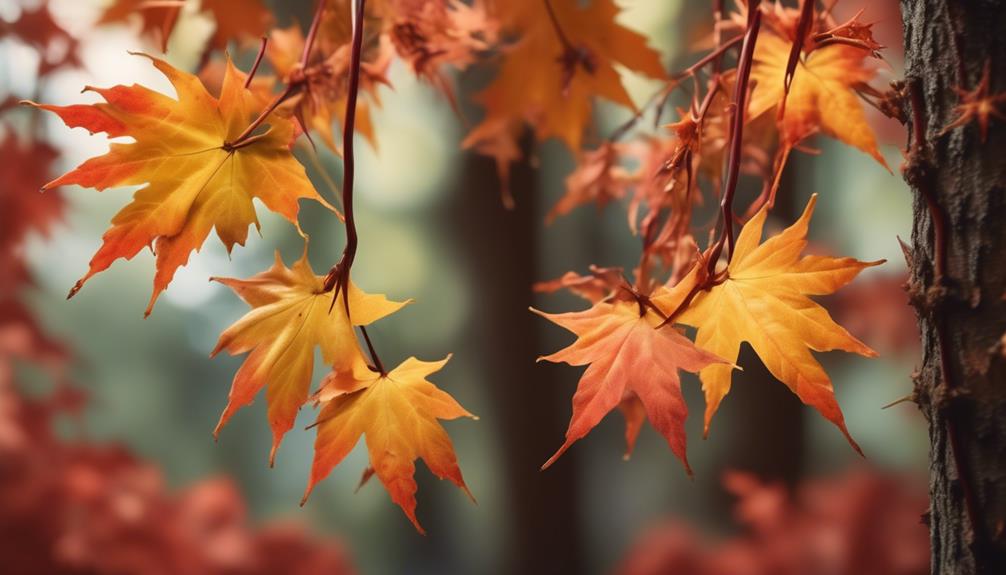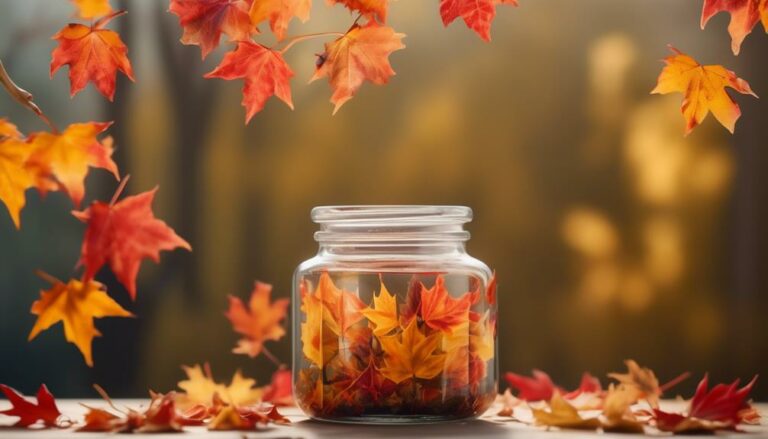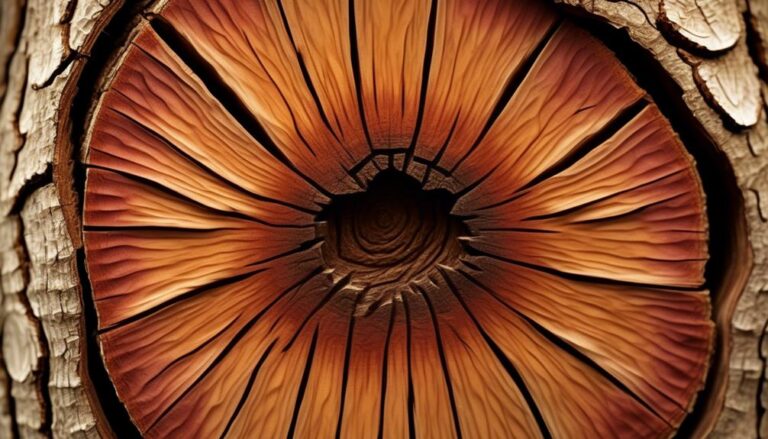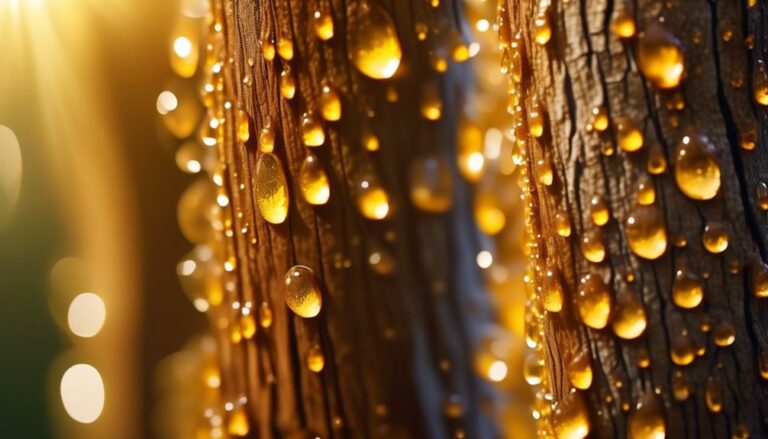Why Are There Different Liquidambar Tree Species?
Hey there! Have you ever wondered why there are different Liquidambar tree species? Well, it's quite fascinating, really.
Picture this: the world is a vast, ever-changing place, and nature has a way of adapting to its surroundings. Just like people, trees come in various shapes, sizes, and colors, each with its own unique story to tell. And that's exactly the case with Liquidambar trees.
There's a whole array of them, spread across different regions. But what's the reason behind this diversity? What makes them so special? Well, my friend, let's embark on a journey to uncover the secrets of these magnificent trees and unravel the mystery of their existence.
Trust me, you won't be disappointed!
Evolutionary Factors
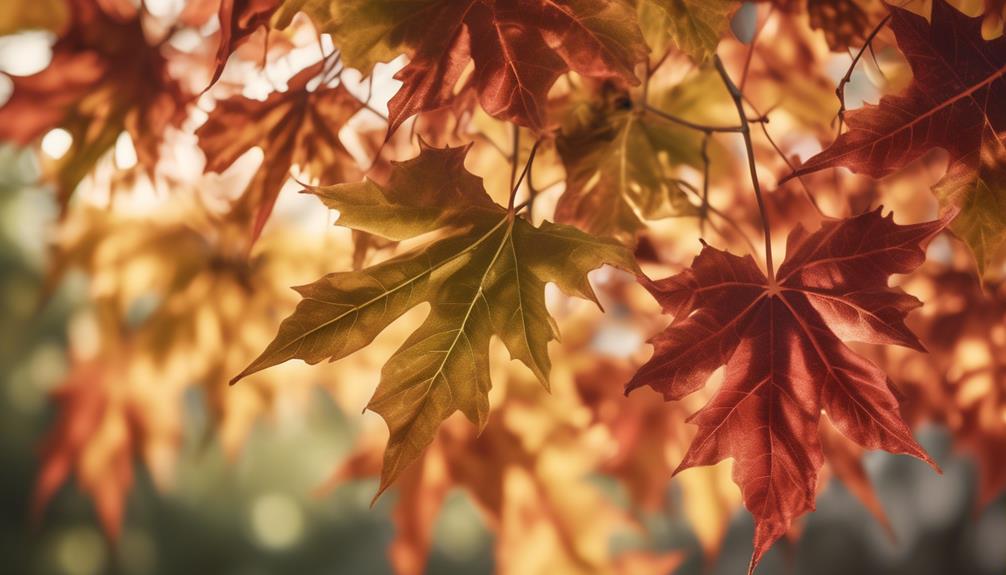
Evolutionary factors have played a crucial role in shaping the different species of Liquidambar trees that exist today. These sweetgum trees, scientifically known as Liquidambar styraciflua, are native to eastern North America, particularly the United States.
Over time, environmental changes and geographical isolation have influenced the divergence of Liquidambar species. As these trees adapted to specific habitats and ecological niches, they evolved into distinct species with unique characteristics.
Genetic drift and natural selection further shaped the traits and distribution of these tree species. Additionally, hybridization events and gene flow have contributed to the diversity of Liquidambar trees.
Thanks to these evolutionary factors, we now have a variety of Liquidambar species, each with their own distinct features and the sweet-smelling liquid amber they're known for.
Environmental Influences
Climate and soil conditions greatly influence the distribution and habitat range of different Liquidambar species. These beautiful trees, also known as sweetgums, can be found in various regions across the United States. Their adaptability to different soil types and precipitation levels allows them to thrive in a wide range of environments.
The leaves of Liquidambar trees are known for their vibrant colors, especially during the fall season. In addition to their aesthetic appeal, these trees produce spiky fruit known as seed balls.
Liquidambar trees are valued for their hardwood, which is used in the production of high-quality lumber and furniture. Their ecological importance can't be overstated, as they provide habitat and food for wildlife, support insect species, and contribute to soil stabilization and erosion prevention.
Geographic Distribution

Liquidambar trees, also known as sweetgums, can be found in various regions across the world, including Southeast and East Asia, the Western Mediterranean, and Eastern North America. Their geographic distribution is quite diverse, spanning different continents and countries.
Here are three key points about the distribution of liquidambar tree species:
- Liquidambar trees are native to countries such as Indonesia, Malaysia, Thailand, China, Korea, India, Turkey, Mexico, and the USA.
- They're cultivated in warm temperate and subtropical climates worldwide, making them adaptable to different environmental conditions.
- Some species of liquidambar trees, like those found in Italy, Spain, Belgium, and New York, have been introduced and naturalized in these areas.
Understanding the geographic distribution of liquidambar tree species is important in the context of studying their ecological and evolutionary factors. By considering these different regions, we can choose the most contextually relevant species for specific purposes such as reforestation or urban landscaping.
Genetic Variations
With their diverse origins and wide distribution, Liquidambar trees exhibit fascinating genetic variations that contribute to their unique characteristics. One of the most noticeable variations is seen in their star-shaped leaves.
The Liquidambar styraciflua, commonly known as the sweetgum tree, is one of the most well-known liquidambar tree species in the United States. Its leaves have five distinct lobes that resemble a star. This genetic variation gives the tree a distinctive appearance and adds to its allure.
Another interesting genetic variation is the production of a sweet-smelling liquid known as gum resin. This resin is often used in traditional medicine and dried herbs.
Understanding these genetic variations helps us appreciate the diversity and adaptability of liquidambar tree species and aids in their conservation.
Adaptations and Survival Strategies
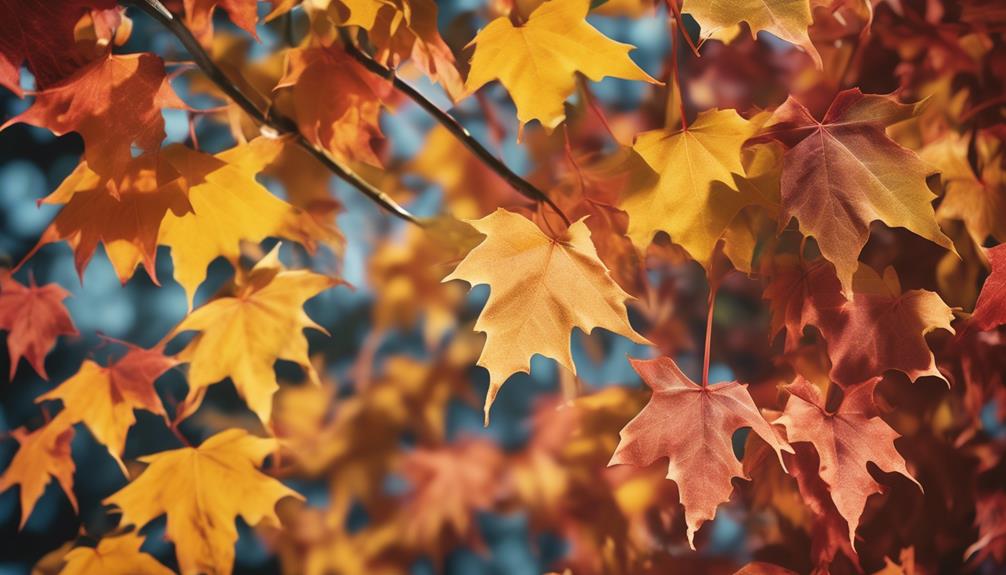
As we explore the fascinating world of Liquidambar trees, let's now turn our attention to their remarkable adaptations and survival strategies, which enable them to thrive in a variety of environmental conditions.
- Utilization of Natural Resources: Liquidambar trees have evolved to produce a sap that can be used as chewing gum, incense, perfumes, and even in folk medicines. This survival strategy allows the tree to make the most of its resources and ensures its continued existence.
- Adaptability to Different Climates: The sweetgum tree, in particular, has shown adaptability to temperate climates and is known for its vibrant display of colors during the autumn season. This ability to thrive in various climatic conditions aids in the tree's ecological success as an ornamental tree.
- Resilience in Various Habitats: Liquidambar trees, including the sweetgum species, have a resilient nature and can thrive in poorly-drained areas. This adaptability makes them pioneer species, capable of establishing themselves in challenging environments.
These adaptations and survival strategies have allowed Liquidambar trees to not only survive but also flourish as they utilize their resources, adapt to different climates, and thrive in various habitats.
Hybridization and Crossbreeding
Hybridization and crossbreeding have revolutionized the world of plant breeding, allowing for the creation of new varieties with enhanced traits and improved characteristics. These techniques have played a significant role in the development of different species of Liquidambar trees, which belong to the Altingiaceae family, also known as the American sweetgum family.
Through hybridization and crossbreeding, breeders have been able to combine the desirable traits of different Liquidambar species, creating new varieties with unique features. This process involves carefully selecting parent plants that possess the desired traits, such as disease resistance or adaptability to different environments.
Human Intervention and Cultivation
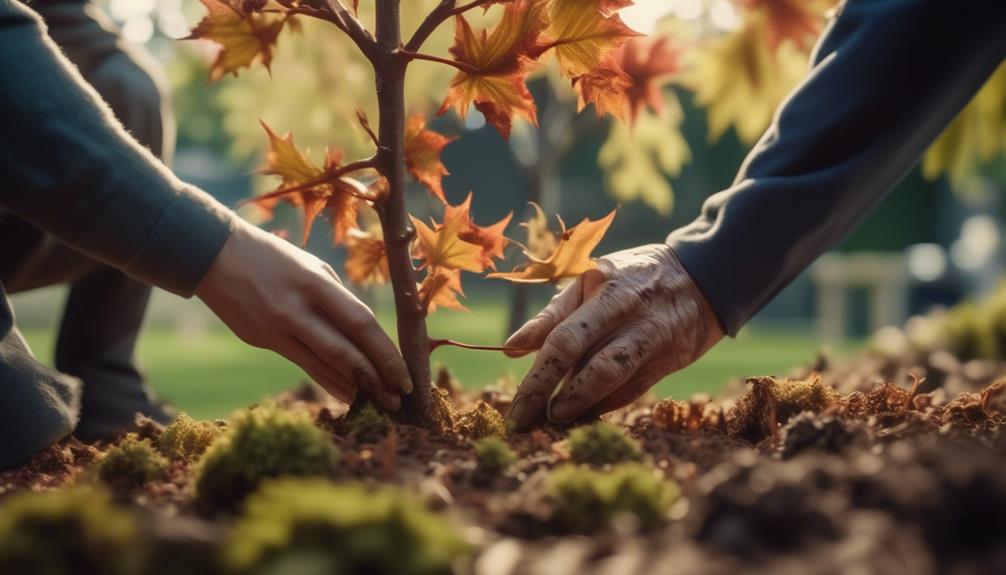
Through human intervention and cultivation, Liquidambar tree species have been carefully selected and bred to enhance their characteristics and adaptability to different environments. These efforts have resulted in the development of various species with unique traits and uses.
Here are three interesting aspects of human intervention and cultivation:
- Archived from the original: The Mayas cultivated Liquidambar trees for their sap, which they used for gift exchanges and chewing gum. The sap, known as sweet gum, was also dried and used for medicinal purposes and as a sweet-smelling incense.
- Dried herbs: Liquidambar trees produce fragrant resin that can be dried and used as herbs in cooking and traditional medicine. Their leaves and bark are also known for their aromatic properties.
- Large tree, big benefits: Liquidambar trees are large and majestic, providing shade and beauty to landscapes. They also offer important ecological benefits, such as carbon sequestration and support for wildlife.
Human intervention and cultivation haven't only shaped the diversity of Liquidambar tree species but also unlocked their potential for various practical and cultural applications.
Ecological Niche Differentiation
Ecological niche differentiation is a fascinating phenomenon that occurs when different species of Liquidambar trees adapt and specialize to occupy unique ecological roles within their environment. In North America, the sweetgum, a member of the plant family Altingiaceae, is a prime example of this phenomenon.
These hardwoods have distinctive characteristics that make them valuable for various purposes. According to the Agriculture Handbook published by the Department of Agriculture's Forest Service, sweetgum trees are commonly used for lumber and interior finish. Their beautiful grain patterns and durability make them ideal for furniture, flooring, and cabinetry.
Climate and Temperature Variations
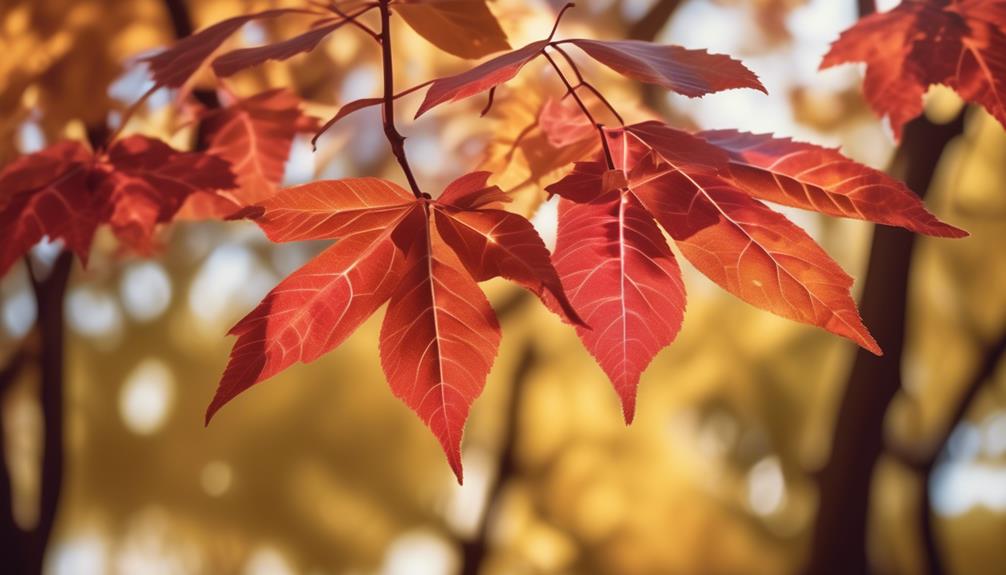
As we shift our focus to climate and temperature variations, let's explore how these factors influence the growth and distribution of different Liquidambar tree species.
- Liquidambar trees thrive in warm temperate and subtropical climates worldwide, including countries like Mexico and Central America. These trees prefer humid subtropical climates and well-drained soils, but can adapt to a wide range of soil types.
- Sweetgum trees, a type of Liquidambar, are native to South Carolina and other parts of Eastern North America, as well as Mexico and Central America. The climate preferences of sweetgum trees include an annual rainfall ranging from 1020 mm to 1520 mm, a growing season rainfall of 510 to 610 mm, and 180 to 320 frost-free days. These trees are adaptable to different soil and site conditions, making them suitable for a variety of regions.
The hardwoods of sweetgum trees are highly valued for their strength and durability. They're commonly used in the production of lumber, boxes, crates, and furniture. Additionally, the dried herbs from sweetgum trees have a sweet-smelling aroma, making them popular for various purposes.
Understanding the climate and temperature variations is essential for the successful growth and distribution of different Liquidambar tree species.
Ecological Succession and Habitat Changes
With the gradual process of ecological succession, the structure and composition of an ecological community undergo change over time. This means that habitats can change as well, leading to shifts in the types of organisms and environmental conditions within an ecosystem.
For example, in the case of Liquidambar trees, habitat changes have played a role in the development of different species. The Society of American Foresters explains that Liquidambar trees, also known as sweetgums, are native to North Carolina and were used by the Mayas for dried herbs. Over time, the Mayas discovered that the wood of these trees was valuable for making boxes and crates. Today, Liquidambar trees are commonly used for lumber in the furniture industry due to their beautiful hardwood.
Conclusion
So, you now know why there are different species of Liquidambar trees! It all comes down to a combination of factors like evolutionary changes, environmental influences, geographic distribution, and genetic variations.
These trees have adapted to their specific habitats with unique leaf shapes, sizes, and colors. Human intervention and cultivation have also played a role in the diversity of Liquidambar species.
Climate variations and ecological changes have further contributed to the differentiation of these amazing trees. Nature truly is incredible!

